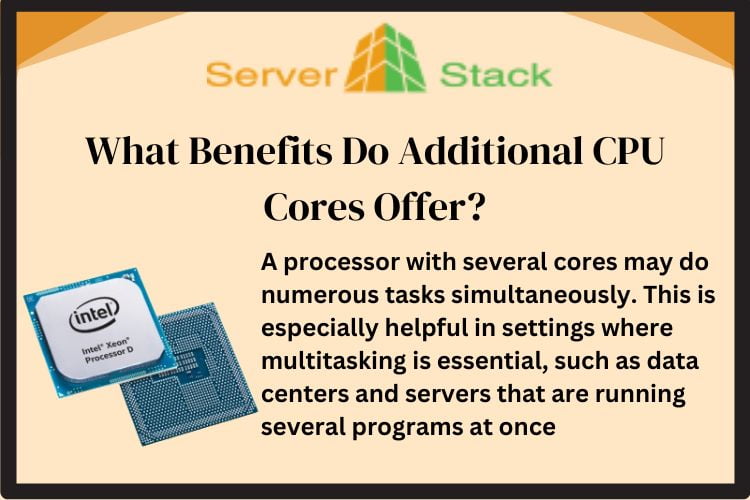Table of Contents
What is a CPU Core?
The CPU core is the main part of the CPU (Central Processing Unit) that reads and executes program instructions. Unlike other hardware components in a server or personal computer, such as storage or memory, the CPU core is critical for operating systems. For example, if you buy a server powered by an Intel Xeon processor, you’re paying for a hefty number of cores that typically corresponds to heavier workloads
How does the CPU Core work?
At its core (no pun intended), the CPU core processes instructions from programs and applications. It consists of calculations and functions necessary for the software to work properly. Each core can independently execute specific instructions, improving the efficiency of the overall system.
How many cores can a CPU have?
Modern processors can come with multiple cores. Entry-level CPUs can only have one or two cores, while higher-end server processors, such as those that support DDR4 memory, can have cores up to 64. The number of cores is an important consideration for performance, as it encompasses multitasking and resource capacity directly.
Contact us
What Other Aspects Should I Take Into Consider While Selecting a Processor?
Think about single-threaded performance when choosing a CPU, particularly if your applications rely significantly on the speed of a single thread. The decision between an AMD or an Intel server CPU can also have an impact on compatibility, performance, and pricing.

What Benefits Do Additional CPU Cores Offer?
A processor with several cores may do numerous tasks simultaneously. This is especially helpful in settings where multitasking is essential, such as data centers and servers that are running several programs at once.
What Is A Thread?
When discussing CPUs, a thread is the smallest set of preprogrammed instructions that may be independently controlled by an operating system scheduler, or scheduler. Through the use of technologies like hyper-threading, a single CPU core may run one or more threads.
Understanding CPU Threads
Threads are virtual versions of CPU cores. Technologies like Intel’s Hyper-Threading allow a single core to run multiple threads, potentially doubling the performance of the core.
What is single threading?
Single threading requires the execution of one command at a time. It is the type of single-core CPU, capable of processing one thread at a time. In modern computing environments, this approach is inefficient due to the limitation of processing multiple tasks simultaneously.
What is multi threading?
Multi threading is the technique of using multiple threads to perform different tasks simultaneously within the same application. This is especially useful in multi-core CPUs, where each core can process multiple threads at once, greatly improving performance.
How does multi threading work?
Multi threading increases the CPU’s ability to run multiple program threads at once, dividing the workload more efficiently among multiple cores. Each core handles incoming work independently but can share resources such as memory with other cores to improve performance.
What are the advantages of additional threading?
Additional threads can greatly improve the performance of the CPU. Multiple tasks can be performed simultaneously, and are particularly useful in applications involving complex calculations and large data processing applications

Difference between core and threads
Although core and threads are important for processing, they have different functions. The learning CPU has real physical resources that compute. However, threads are virtual components that control the execution of process instructions by the core.
Conclusion
It’s important to understand the difference between CPU and core threads when setting up a server or upgrading hardware. A balanced combination of cores and threads can provide significant improvements in performance, making it important for tech professionals to choose wisely based on their specific need
Frequently Asked Questions
Q1. How do CPU cores and threads work together?
CPU core and thread work together to make your computer run faster and more efficiently. The core is like multiple workers, and threads are the tasks they can do at the same time. More workers and more tasks mean getting more faster.
Q2. Why would I want a CPU with more cores?
More core improves your computer’s ability to perform multitasking at the same time. This is great for running several programs at once or for professional tasks that need lots of computing power.
Q3. It is always better to have more threads?
Having more threads can be better. If you use software that takes advantage of them. It makes your computer better at handling multiple tasks at once, which can speed up everything from gaming to video.
Q4. How do I know If need a CPU with more cores and threads?
Consider what you use your computer for. If you run lots of programs at the same time or use intensive software like video editing or gaming, you might benefit from more core and threads. If you mainly do simpler tasks like browsing the web or using word processors, you might not need as many.







